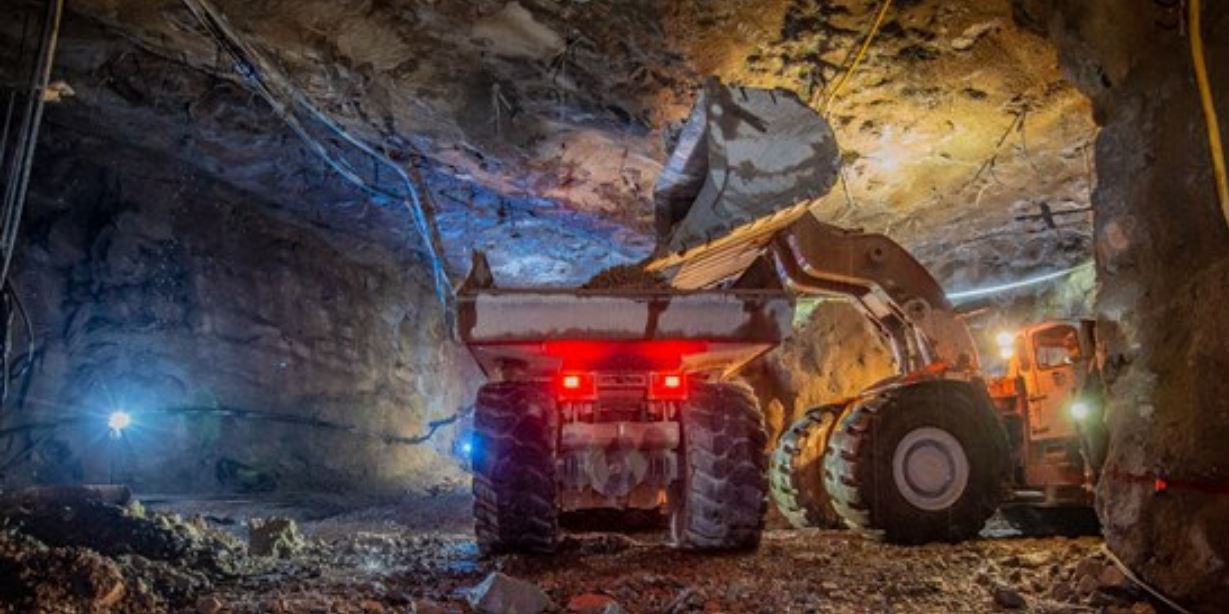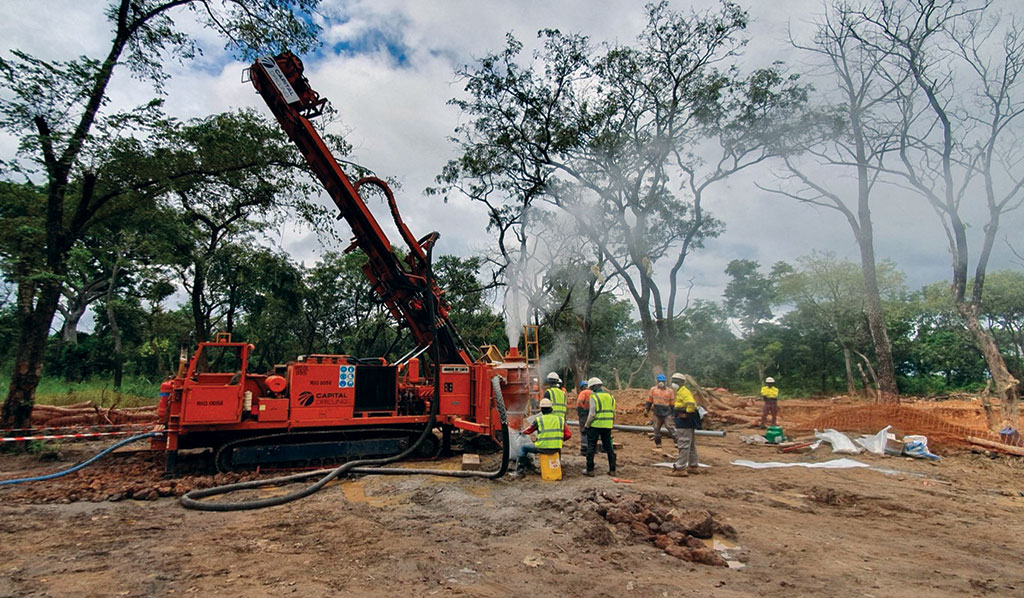News worth noticing
Constantine doubles its Palmer project resource. The Crocodile-Newmarket merger gives a team of heavyweights the foundation for a new midtier producer. Focus Ventures keeps advancing its Bayovar 12 phosphate project. The noteworthy news of a bottom market Monday.
I keep encountering articles about looming supply crunches for gold and zinc, about how little risk there is left in mining equities with valuations so low, and about situations that exist only because mining has been so beaten down, like companies trading below cash in the bank or getting bought at a 100% premium to their four-year low or in-the-black producers getting no credit for consistent dividends.
The bounce along the bottom continues, but don’t get hypnotized. There is news out there that deserves your attention.
Constantine Metals
Take Constantine Metals’ resource update, out today. After a successful drilling program last season Constantine was able to double the resource at its Palmer project in southeast Alaska.
Palmer is now home to 8.1 million inferred tonnes of volcanogenic massive sulphide mineralization carrying average grades of 1.41% copper, 5.25% zinc, 0.32 gram gold, and 31.7 grams silver. The resource sits in five discreet lenses, four of which are open for expansion in most directions. And the most exciting intercepts at Palmer came late last season, from a geophysical target below the old resource that begs for further drilling.
The deposit at Palmer is made of steeply dipping lenses inside a steep mountain. That sounds like a difficult mining scenario – but in fact it is perfect. A highway connects the base of the mountain to the deep-sea port of Haines, 60 km away. An underground mine at the site would take advantage of gravity – start at the bottom and let the mineralization fall. And Palmer is part of the same belt of rocks that hosts Greens Creek, one of the world’s richest VMS deposits, which is one of the reasons the potential to find more mineralization is high.
Best of all, Constantine has the money to keep exploring thanks to a very well structured deal with Dowa Metals and Mining. Dowa is spending US$22 million over four years to earn a 49% stake in the project. The Japanese smelting company is happy with the resource estimate and has committed to a US$5-million drill program in 2015.
Newmarket – Crocodile
Another interesting piece of news today concerned a merger. Crocodile Gold and Newmarket Gold are combining to create a company led by a team of industry heavyweights looking to create a new mid-tier producer.
At first glance it seems an odd deal. Crocodile offers up the assets, in the form of 200,000 oz. annual gold production from three mines in Australia. Newmarket offers almost nothing, as the company is little more than a shell. However, it is a shell with some very big names on its board, including Lukas Lundin, Randall Oliphant (of New Gold), and Raymond Threlkeld (of Rainy River Resources).
Those names plan to use their deep relationships in the sector to find and acquire gold assets. The merger with Crocodile provides the cash flow to do so.
And that cash flow looks good. Cash costs at Crocodile’s mines have fallen 41% since 2012 to US$683 per oz.; all-in sustaining costs now average US$938 per oz.
With a balance sheet in the black and a board full of industry heavyweights, the new Newmarket will undoubtedly acquire additional assets soon. After all, that is the point.
The deal values Crocodile at $0.37 per share, though the cash portion is limited to $20 million. Assuming full proration, Crocodile shareholders will get 1.088 NewCo shares and $0.042 in cash for each Crocodile share held. To fund the cash portion of the offer Newmarket is looking to raise $25 million in equity; management and directors are subscribing for almost $8 million.
The new company will be known as Newmarket Gold. It will be one to watch.
Focus Ventures
Then, for something completely different, how about Focus Ventures’ work at its Bayovar 12 phosphate project in Peru? Focus has now defined phosphate mineralization over 8 km east-west and 5 km north-south. Yes – that’s a big deposit, even for phosphate. Drills keep hitting into the same sequence of phosphate beds, showing the deposit has remarkable consistency.
Bayovar 12’s real advantage is that its phosphate is of a rare form that can be used as a direct-application fertilizer. Alongside its exploration holes Focus drilled eight large-diameter holes to gather 400 kg of material to test how it fared the drying process that creates the direct-application product.
What I really like about Focus, aside from its large deposit of an in-demand commodity amenable to simple processing located in a good jurisdiction project, is management’s approach. It is a strong management team – for example Simon Ridgway, a man with significant exploration and development credit to his name, is chairman. And their solution to their most recent challenge showed the power of experience.
As 2014 wrapped up Focus was staring down a $3-million option payment on Bayovar 12 due Feb. 26th. Money was available, but on terms the team just couldn’t accept.
The fact they were still working to earn their 70% stake in the project left them between a rock and a hard place. Meetings with Asian fertilizer companies always broke down when the potential partner realized Focus didn’t yet own any of Bayovar 12, and wouldn’t for several years.
The option payment would have kept Focus’ earn-in on track, but the company would still be stuck without a marketable stake in the project. So Focus approached their Bayovar 12 partners and negotiated a revised deal, giving Focus 70% ownership for a $4-million payment.
The deal was great…but Focus didn’t have $4 million. It did, however, have a way to turn $4 million into a 70% stake in a promising phosphate project, which is the kind of asset that opens debt market doors. Soon a debt deal was struck with Sprott Resource Lending. Shortly after Focus sold Radius Gold a 2% net smelter royalty on its 70% of Bayovar 12 for $1 million, which gave it the immediate cash to close the Sprott deal.
In these markets it is about getting it done, and that is precisely what the Focus team did. Ideally would they want to sell an NSR or take on debt to explore? No. But a four-year bear market is far from ideal. At this point what matters is finding ways to keep moving forward.
The Context
As these deals and announcements trickle in, evidence of the need for new discoveries and new mines continues to mount.
This mineweb.com article article shows that the world’s top five gold producers all saw their reserves fall from 2013 to 2014, by an average of 14%. The culprit was not the price of gold, as all five left their gold price assumptions unchanged. Reserves shrank simply because of asset sales and mining depletion. That’s a trend that can only last so long – miners can sell assets and high-grade their deposits to strengthen their books for a time, but soon the need for new mines to replace old ones will become crystal clear.
Gold isn’t the only metal in need of new mines. Articles about the looming zinc supply crunch are everywhere, like this mining.com piece. The zinc story is pretty straightforward. Years of abundant supply from large mines kept the zinc price too low to incentivize new exploration, but now those mines are reaching their ends and the new project pipeline is almost empty.
Copper is getting in on the action too. Less than six months after he said copper would remain in surplus until at least 2018, Rio Tinto copper boss Jean Sebastien Jacques says his prediction is already out of date. Supply disruptions from some of the world’s largest copper mines in recent months plus better-than-expected demand now has the copper market looking well-balanced this year and perhaps moving into deficit as early as next year. Iron ore-focused Rio is looking more and more towards copper for future growth.
Price forecasts also look good for diamonds and uranium. All told, the future is bright for the things that we mine.
Until that future arrives, pay attention to news flow. There’s really interesting stuff buried in there every day.
Resource Maven finds and explains the news that matters every day in the world of resource exploration and development.
Click HERE to have Maven’s mining news emailed to you daily.
Or follow Maven: Facebook (www.facebook.com/resourcemaven)
Twitter (@miningmavengwen)
To learn how to turn resource knowledge into investment success: subscribe to Resource Maven: The Turning Point.
EDITORIAL POLICY AND COPYRIGHT: Companies are selected based solely on merit; fees are not paid. This document is protected by copyright laws and may not be reproduced in any form for other than personal use without prior written consent from the publisher.
DISCLAIMER: The information in this publication is not intended to be, nor shall constitute, an offer to sell or solicit any offer to buy any security. The information presented on this website is subject to change without notice, and neither Resource Maven (Maven) nor its affiliates assume any responsibility to update this information. Maven is not registered as a securities broker-dealer or an investment adviser in any jurisdiction. Additionally, it is not intended to be a complete description of the securities, markets, or developments referred to in the material. Maven cannot and does not assess, verify or guarantee the adequacy, accuracy or completeness of any information, the suitability or profitability of any particular investment, or the potential value of any investment or informational source. Additionally, Maven in no way warrants the solvency, financial condition, or investment advisability of any of the securities mentioned. Furthermore, Maven accepts no liability whatsoever for any direct or consequential loss arising from any use of our product, website, or other content. The reader bears responsibility for his/her own investment research and decisions and should seek the advice of a qualified investment advisor and investigate and fully understand any and all risks before investing. Information and statistical data contained in this website were obtained or derived from sources believed to be reliable. However, Maven does not represent that any such information, opinion or statistical data is accurate or complete and should not be relied upon as such. This publication may provide addresses of, or contain hyperlinks to, Internet websites. Maven has not reviewed the Internet website of any third party and takes no responsibility for the contents thereof. Each such address or hyperlink is provided solely for the convenience and information of this website’s users, and the content of linked third-party websites is not in any way incorporated into this website. Those who choose to access such third-party websites or follow such hyperlinks do so at their own risk. The publisher, owner, writer or their affiliates may own securities of or may have participated in the financings of some or all of the companies mentioned in this publication.
More News
{{ commodity.name }}
{{ post.title }}
{{ post.date }}



Comments